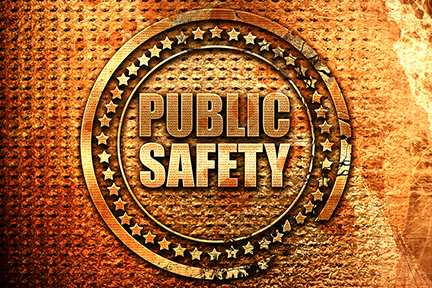
As 2024 progresses, public safety agencies are navigating a rapidly changing environment shaped by evolving societal needs. The challenges agencies face are multifaceted, but so are the opportunities for innovation and improvement.
Looking to the year ahead, we foresee increased focus on modernizing technology solutions, including use of artificial intelligence (AI) and machine learning to effectively address these challenges. In this article, we’ll explore their impact and how public safety organizations are expected to use them to meet the needs of their workforce and the communities they serve.
Addressing Staffing Challenges
One of the most pressing issues facing public safety agencies this year is the continuation in staffing shortages. This challenge has necessitated a shift towards using technology as a force multiplier. By incorporating machine learning, agencies can sift through data more efficiently, identifying effective personnel utilization that minimizes operational cost and mitigates workforce fatigue. As Forbes notes, these technologies are proving invaluable in augmenting the capabilities of existing staff.
In some jurisdictions, retired personnel are being redeployed into field duties. As a result, agencies are continuing to use technology to support their hiring practices, to recertify sworn personnel and to make seniority payroll compensation adjustments. Others are using technology to manage the large number of personnel exiting their positions, as well as ensuring the return costly operational assets.
Optimizing Scheduling and Prioritizing Wellness
Adopting scheduling system automation is one trend that will continue to gain momentum in 2024. These systems reduce administrative and operational workloads by replacing manual processes with automated workflows using agency policies. They will continue to help agencies forecast staffing vacancies, control fatigue risk, and push mobile notifications to personnel about changes and assignment vacancies.
Technology, particularly in tracking schedules that prevent fatigue and excessive overtime, will remain crucial in promoting wellness. In addition, mental and physical wellness of public safety personnel will be a continued area of focus with implementation of comprehensive programs to help manage stress. Initiatives that provide critical support systems, including stress management workshops, psychological counseling, and peer support networks, are expected to grow among public safety workers.
Boosting Recruitment & Retention
Technology is expected to continue significantly impacting the recruitment and retention of public safety personnel. Agencies will be exploring new avenues to enhance recruitment and improve retention rates, including digital platforms for recruitment drives and developing programs aimed at career development. These initiatives will be vital in attracting a new generation of tech-savvy public safety professionals who are seeking careers that offer growth and fulfillment.
Enhancing Operational Resource Allocation
In 2024, organizations will be striving to allocate and tracking resources more effectively and efficiently. Like many private entities, public safety agencies will be focusing on the cost of asset management to ensure that their costly equipment is being used optimally by qualified personnel. Technology that will be able to cross-staff operational equipment among multiple stations or beats will help agencies optimize their asset investment efficiently.
Data-Driven Decision Making and Community Collaboration
The use of data analytics has become increasingly prevalent, enabling agencies to make informed decisions based on accurate, real-time data. This approach is expected to grow in resource allocation, incident response, and strategic planning. Additionally, there’s a growing trend of collaboration with community partners, including social workers, mental health professionals, and community organizations. This collaborative approach, especially in responding to non-violent calls, will be helping to reshape how public safety agencies interact with and serve their communities.
Enhancing Public Safety Through Community Engagement
Public safety agencies will continue to use community engagement to enhance public safety and build trust. By actively engaging with the community, agencies will be better positioned to understand and respond to the needs of the people they serve, fostering a sense of mutual respect and cooperation.
Looking Ahead
2024 represents a significant turning point for public safety. Beyond simply adapting to technological advancements, agencies will be actively leveraging technology to modernize their operations. The scene is set for enhanced real-time coordination, enabled by cutting-edge technology that simplifies recruitment, bolsters staff retention, and optimizes operations with unparalleled resilience and security.
This extends beyond technological integration. 2024 is shaping up to be a year where connections take center stage, characterized by data sharing to build community trust and harmonize public safety efforts. This year’s advancements are laying the foundation for the future of public safety: a more efficient, interconnected landscape that is prepared to meet emerging challenges head on.
For more insights into public safety workforce management, subscribe to our blog.

